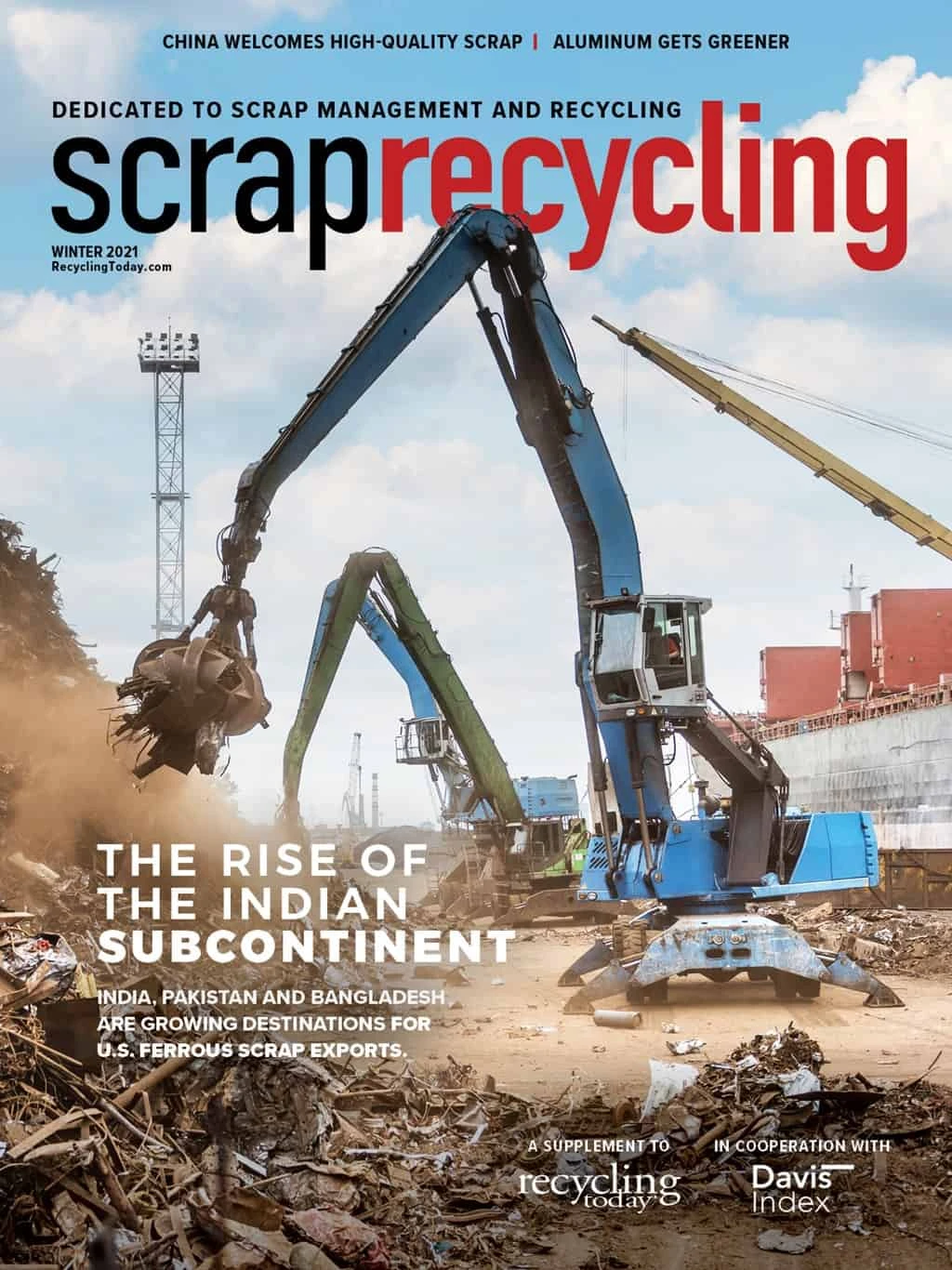
Welcome to the inaugural issue of Scrap Recycling. Since 1963 Recycling Today has covered the metals recycling business, and we fully intend to continue that coverage. However, we’ve introduced this supplement because the scrap business is going through a tremendous period of change.
When I entered the scrap industry some 30 years ago by working for Recycling Today, it was very different than today. One of those differences was that scrap processors—especially in the nonferrous sector—often produced highly specialized metal packages for their consumers.
While some of that remains, much of it was washed away by the rise of China. In the early 1990s, scrap buyers from China began purchasing material in small quantities. Over the following 20-odd years, that buying ramped up in dramatic form. As it did, many quality standards declined.
I recall the story of a heavy media plant operator who sold a load to one such buyer. After they negotiated the deal, the final request from the Chinese buyer—to the amazement of the processor—was that the very clean, separated grades be mixed together as the containers were loaded! The cost to separate the material in China was far less than the import duty savings.
Today, this has all changed. Green Fence and the range of other Chinese programs designed to restrict the importation of waste have created a ripple effect. China wants only clean raw materials, what some call “furnace ready” in the metals world. Other nations also have followed China’s lead.
“Green Fence and the range of other Chinese programs designed to restrict the importation of waste have created a ripple effect.”
This means the scrap processing industry is having to shift once again. Producing metal grades to exacting specifications is becoming the norm yet another time. Getting there, however, is a challenge.
Of course, the growth and evolution of the Chinese market have not occurred in a vacuum. Other nations also have developed a thirst for North American scrap. Steel mills in places like Turkey, for example, have come to rely upon our ferrous scrap.
Parallel to the shifts in materials demand have been tremendous advancements in equipment technology. Shredders have advanced. Wire chopping lines have advanced. Downstream sorting equipment has advanced. Shears and balers have advanced.
Scrap Recycling will look at all these topics.
Published in collaboration with the team at Davis Index, the publication will examine material pricing trends and flows, the technology available to meet stringent specifications, melt shop requirements and so much more.
We hope that you enjoy the first issue. Subsequent issues will come in June and October of 2021. We welcome your feedback and any story ideas you might like to offer.

Explore the Winter 2021 Scrap Recycling Issue
Check out more from this issue and find your next story to read.
Latest from Recycling Today
- APR, RecyClass release partnership progress report
- Clearpoint Recycling, Enviroo sign PET supply contract
- Invista expanding ISCC Plus certification program
- Redwood partnership targets recycling of medium-format batteries
- Enfinite forms Hazardous & Specialty Waste Management Council
- Combined DRS, EPR legislation introduced in Rhode Island
- Eureka Recycling starts up newly upgraded MRF
- Reconomy Close the Gap campaign highlights need for circularity





